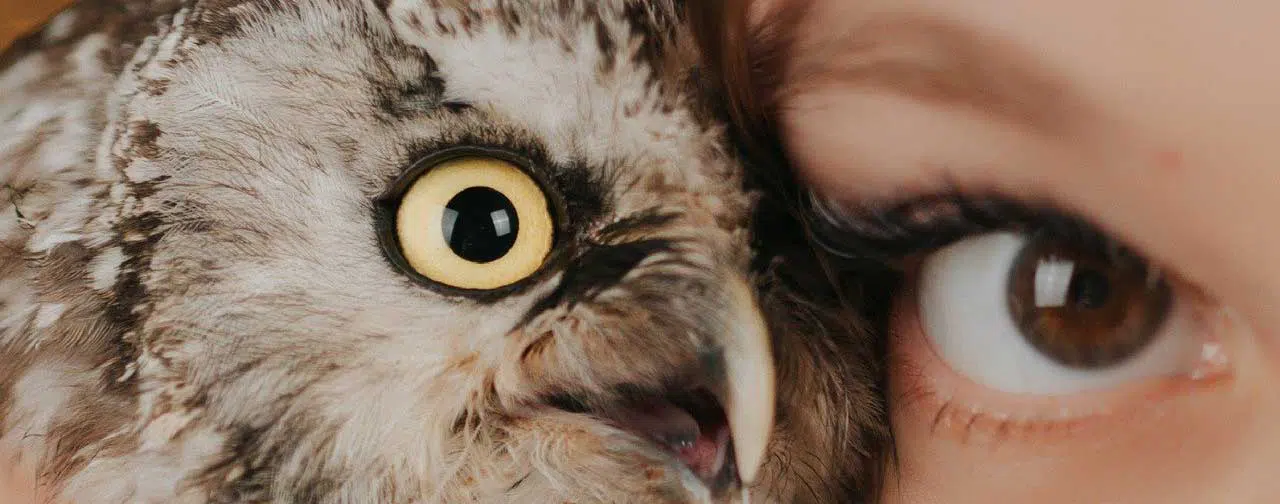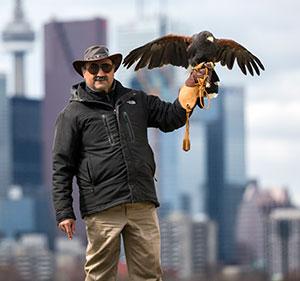Bird of Prey include Eagles, Owls, Hawks, Falcons and Vultures.
- Birds of Prey have some of the best visual acuity in the animal kingdom. Eagles are at the top, with hawks being a close second
- Some birds of prey see ultraviolet light
- Eagles and hawks have such exceptional vision that they can see up to 5x better/farther than humans
- Owls have the best night vision of all animals

Birds of Prey, or raptors, have about the best visual acuity in the animal kingdom. Eagles can see their prey from up to 3 km away. Raptors' eyes are quite large relative to the size of their head and the position of the eyes give them a very wide field of vision. The unique shape of the eyes and the position and number of the rods and cones give them an almost telephoto like lens where they can magnify an image. It is thought that this is what allows raptors to see their prey from such a distance - even in flight. There is a very high density of photoreceptor cells in the retina, especially in the cones, which are responsible for colour vision. A human has about 200,000 cone cells, an eagles eye has almost 1 million of these specialized cells. A bird's eye has 4 different types of cone cells; (versus a human's 3 types) this allows birds to see a much broader spectrum of colour than humans or other mammals. The ciliary muscles in the lens of the eye can change the shape of the lens much more rapidly and to a greater extent than in humans. This also contributes to the legendary eyesight of raptors.
Raptors are also thought to have the ability to see ultraviolet light. It makes sense, because it would give them the ability to see their prey in brighter, more noticeable colour. It also makes for easier recognition of fruits, insects, and and other birds, thus aiding in survival and the procuring of sustenance. Still on the subject of survial: Many birds' plumage contains ultraviolet colour, allowing for the choosing of a healthy mate based on the brightness of said plumage.
Owls are the exception to this. Owls are primarily twilight or night hunters. They have even larger eyes relative to the size of their heads. The large eyes enhance their ability to gather any available light into their eyes. The structure of an owls eye is different in that the retina is tube shaped and larger than other raptors. Owls have a higher density of rod cells than cone cells in their eyes compared to other birds of prey. The rod cells give them the ability to see better in low light by allowing more light into the larger retina. Their colour perception is much less than that of other birds of prey because of the lower number of cone cells. This biological adaptation gives them a significant advantage when hunting in low light conditions.
Birds of prey are generally known for their exceptional vision and extraordinary hunting ability. We would all like to have “eagle eye” vision, or see from a hawk's eyes. The biological adaptations mother nature has made in the raptors are truly remarkable and incredible. Imagine seeing a speck in the sky, way up there, moving like an eagle floating on the wind's channels, and realize he can see you well enough to decide whether you might make a good lunch or dinner.
Understanding these majestic creatures highlights the diversity of raptors - particularly the owls, and also points out the complex interplay of ecology and biology in the animal kingdom. Conservation efforts are made world wide in recognition of the importance of birds of prey and in order to further develop and plan for effective strategies to protect them and the habitats they live in. Educating the public is of great importance in protecting these magnificent birds globally.














